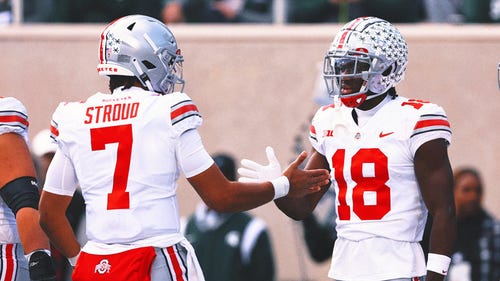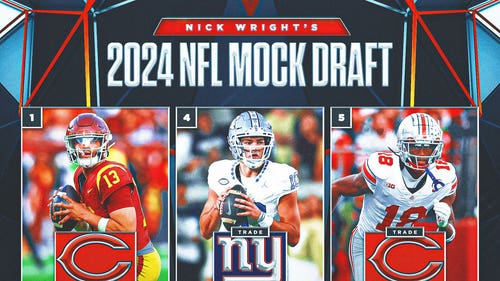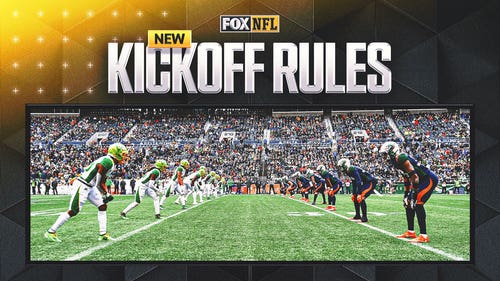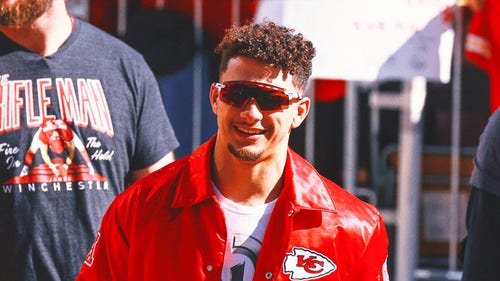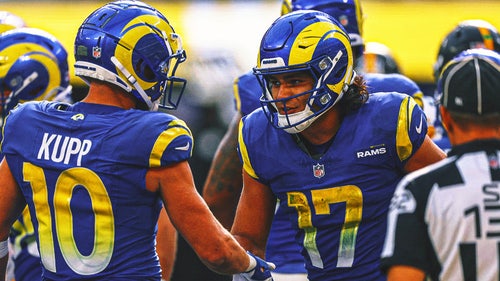
Mike Pereira's Nov. 11 mailbag
Hi everyone, here are a few more Mailbag questions this week and I’m happy to answer them. (Read the latest chat recap here).
Bud H. from Montgomery, Ala. wrote:
"During the Colts’ last TD drive, Trent Cole was penalized 15 yards for a blow to the head and the Colts were awarded the ball and a first down. On replay, it looked like Cole's hand slid down the back of Peyton Manning's helmet and dislodged the ball. I understand the need for the rule, but there has to be some discretion when the contact is incidental."
There is some discretion, Bud, but the referees are told to err on the side of safety. I kind of look at it like the facemask rule. It is not a foul to grab the facemask, but it is a foul if you twist, turn, or pull it. It really is pretty much the same with the contact to the helmet. They shouldn't call a foul unless the head twists or turns showing that more of a blow has occured. The hit on Manning was probably one you could have gotten away without calling but the referee saw the head move and that is why he made the call. He will get supported.
Kati K. from Vancouver, Wash. wrote:
"If a referee makes an error as to what down it is and doesn't realize it until after the next play, can the ref go back and make it right, or is it too late?"
Depends on the situation, Kati. You can't void a play and go back once the ball has been snapped. You can, however, correct the down, which is what happened in the Chiefs-Raiders game, as long as you don't void a down to do so.
In the Chiefs-Raiders game, the official ruled a Chiefs touchdown but replay reversed it to the runner being down at the 1-yard line. The officials lost track of the fact that the third down play that was ruled a touchdown had gained a first down. The Chiefs were called for holding on the next play and the officials said it was fourth down after the penalty. The Chiefs brought it to the crew's attention and they changed to down to reflect first-and-goal from the 11-yard line.
Mike C. from Douglasville, Ga. wrote:
"Mike, people who truly observe football realize that at times the refs have an almost impossible task of making penalty calls in real time, with the game at full speed. With that in mind and after Troy Polomalu's remarks, do you think that the commissioner’s office alone should be solely responsible for reviewing roughness calls for the purpose of levying fines and suspensions? Or, would a committee formed of former players be better suited to review these calls?"
Former players and coaches are involved, Mike. Although executive vice president Ray Anderson gets most of the face time, it is former 49ers defensive back Merton Hanks that hands out 95% of all the fines. Before Hanks it was Gene Washington.
When it comes to appealing fines, former Raiders coach Art Shell along with former NFL coach Ted Cottrell are a part of the process. By the way, the discipline process is negotiated with the NFL Players Association and they share the expenses of those involved.
Having active players and coaches involved on a panel would be ludicrous. Imagine the bias involved if that were to happen. You want a player involved in a decision when it was his teammate that was hit and hurt? Active players need to play and active coaches need to coach. End of story.
Edward from Denver wrote:
"I know this is a judgment call and very difficult to rule during play, but I've noticed many times that the placement of the ball can be very inaccurate and at times is the difference between a first down and fourth down. Can the spot of the ball be challenged?"
If it is a difference from being a first down or not, then it can be challenged. It can also be challenged if a touchdown is in question.
You are right, Edward, when you say this is a tough call for an official. Many times there are players that interfere with an official's view or the runner and the ball may disappear into a pile of players.
Some people have suggested that a microchip should be put in the ball to determine its most forward point. That wouldn't solve the problem. You might know where the ball ended up but you wouldn't know where it was when the runner’s knee or any other part of the body hits the ground other than the hand or foot. You can't put a chip in knees, elbows and forearms. It is not an exact science and that will not change.
Tom I. from Bakersfield, Calif. wrote:
"How can it not be an offside when the kicker’s left foot (if he kicks with the right) comes down beyond the kickoff line before he makes contact with the ball?"
The rule book is specific about this, Tom, when it says that the kicker of a free kick and the holder of a free kick — if there is one — are allowed to be offside. There is one other player that can be offside by rule. He is the center, whose head is allowed to be in the neutral zone but not beyond it.







































































































































